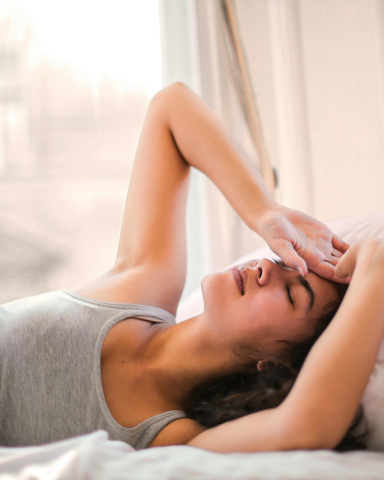Introduction
Osteoarthritis, a chronic degenerative joint disease, affects millions of people around the world. Although today we do not yet have a miracle cure, there are many strategies to help manage symptoms, improve mobility and maintain quality of life. In this article, we support you in your management of osteoarthritis by offering you several natural approaches.
Understanding osteoarthritis
What is osteoarthritis?
Osteoarthritis is a degenerative joint disease that occurs when the cartilage that cushions the ends of bones deteriorates over time. This deterioration can lead to painful inflammation, making movement difficult. It can affect any joint, but particularly affects the knees, hips, spine and hands.
Causes of osteoarthritis
Osteoarthritis is usually the result of aging, but it can also be caused by factors such as joint injuries, obesity, genetics, and certain metabolic diseases.
Symptoms and diagnosis of osteoarthritis
Symptoms of osteoarthritis can vary widely, but generally include pain and stiffness in the joints, decreased mobility, and sometimes swelling. Diagnosis is usually made through a combination of physical exams and imaging tests such as X-rays or MRIs.
The impact of osteoarthritis on mobility
How osteoarthritis affects mobility
The pain and stiffness caused by osteoarthritis can make it difficult to move the affected joint, limiting mobility and independence. This can affect a person's ability to perform daily activities, such as walking, climbing stairs, or even holding objects.
Importance of maintaining mobility in cases of osteoarthritis (H3)
Despite the pain, it is crucial to maintain some mobility to preserve joint function and muscle strength. It also helps maintain a healthy body weight, which is essential for reducing pressure on joints affected by osteoarthritis.
Physical exercise as a means of managing osteoarthritis
Recommended types of exercises
Low-impact exercises like walking, swimming, cycling and yoga can be beneficial for people with osteoarthritis. These activities help strengthen the muscles around the joints, maintain flexibility and promote healthy body weight.
Precautions to take when exercising
It is essential to listen to your body and avoid straining painful joints. If an exercise causes persistent pain, it is best to stop it and consult a healthcare professional.
The role of physiotherapy
Physiotherapy can play a crucial role in the management of osteoarthritis. It can help improve flexibility, muscle strength, and balance.A physical therapist can help design a personalized exercise program that meets a person's individual needs.
Food, nutrition and osteoarthritis
Beneficial foods for osteoarthritis
A diet rich in fruits and vegetables, whole grains, lean protein, and omega-3 fatty acids can help reduce inflammation and manage osteoarthritis. Omega-3 fatty acids, found in fatty fish like salmon and sardines, are particularly beneficial for their anti-inflammatory potential.
Foods to avoid in case of osteoarthritis
It is recommended to avoid processed foods and foods high in sugar, which can increase inflammation. Alcohol and caffeine can also make osteoarthritis symptoms worse in some people.
Useful supplements for osteoarthritis
Some people find that supplements, such as glucosamine, chondroitin, and omega-3 fatty acids, help relieve osteoarthritis symptoms. However, it is important to consult a healthcare professional before starting a new supplement.
Natural pain relief techniques
Use of medicinal plants and CBD
Certain medicinal plants, such as turmeric, ginger, and arnica, have been used for centuries for their anti-inflammatory and analgesic properties. In addition, CBD (cannabidiol), a non-psychoactive compound found in cannabis, is increasingly recognized for its potential in the management of chronic pain, particularly that associated with osteoarthritis. For example, Omri's Invigorating Chinese Balm, concentrated in essential oils of peppermint, rosemary, eucalyptus, cajeput and wintergreen combined with CBD, can help to soften tensions and feelings of discomfort. Likewise, Omri's Joint Muscles Gel, concentrated in essential oils of peppermint, abrial lavandin and wintergreen combined with CBD, can help soothe persistent sensitive areas such as osteoarthritis.
Thermotherapy and cryotherapy
Thermotherapy, which involves applying heat, and cryotherapy, which involves applying cold, are two commonly used techniques to relieve osteoarthritis pain. Heat can help relax muscles and increase circulation, while cold can help reduce inflammation and numb the painful area.
Relaxation techniques and stress management
Stress can increase the perception of pain. Relaxation techniques, such as meditation, yoga, or deep breathing, can help manage stress and therefore better manage pain.
Improving sleep to manage osteoarthritis
Link between sleep and pain management
Good quality sleep is crucial for pain management. Indeed, lack of sleep can increase sensitivity to pain and make osteoarthritis management more difficult.
Tips to improve sleep
To improve sleep, it may help to establish a regular bedtime routine, avoid caffeine and screens before bed, and create a comfortable, calming sleep environment.
Living with osteoarthritis: Daily coping strategies
Adapt your environment to facilitate mobility
In cases of osteoarthritis, it may be necessary to adapt your environment to facilitate mobility and reduce pain. For example, aids like bathroom grab bars, a raised toilet seat, or kitchen utensils with wide handles can be very helpful.
Management of daily activities
Managing daily activities is another important part of living with osteoarthritis. It can be helpful to schedule regular breaks when performing tasks to avoid overloading joints and to ensure you maintain a balance between activity and rest.
Conclusion
Living with osteoarthritis can be a challenge, but with the right strategies and an adapted lifestyle, it is possible to manage symptoms, improve mobility and maintain a good quality of life. Whether it's appropriate exercise, a balanced diet, natural pain relief techniques or adapting one's environment, there are many natural and effective approaches to managing osteoarthritis. However, it is essential to always consult a healthcare professional before adopting new osteoarthritis management strategies, to ensure that they are suitable for your specific situation.
Keywords: Osteoarthritis, Osteoarthritis pain management, Exercises for osteoarthritis, Diet and osteoarthritis, Natural management of osteoarthritis
FAQ
- What are the best natural remedies for osteoarthritis?
Natural remedies for osteoarthritis include turmeric, ginger, fish oil and Boswellia, which have been shown to have anti-inflammatory properties. Additionally, cannabidiol (CBD) and certain dietary supplements, such as glucosamine and chondroitin, may help manage the pain and inflammation associated with osteoarthritis.
- What types of exercises are recommended for people with osteoarthritis?
Low-impact exercises, such as walking, cycling, yoga, and swimming, are generally recommended for people with osteoarthritis. Strengthening and stretching exercises can also help improve mobility and reduce pain.
- What foods can help relieve osteoarthritis symptoms?
A diet rich in fruits, vegetables, lean proteins, whole grains, and omega-3 fatty acids can help relieve osteoarthritis symptoms. Foods rich in antioxidants and anti-inflammatories, such as berries, oily fish, and nuts, may also be beneficial.
- How can stress management help relieve osteoarthritis?
Stress can exacerbate osteoarthritis symptoms, such as pain. Stress management techniques, such as meditation, yoga, and deep breathing, can help reduce muscle tension and improve pain perception.
- Can acupuncture help relieve osteoarthritis?
Some studies suggest that acupuncture may help relieve osteoarthritis pain, but results are mixed. If you are considering this option, it is important to consult a healthcare professional.
- Is yoga beneficial for osteoarthritis?
Yes, yoga can be beneficial for osteoarthritis. It can help improve flexibility, strengthen muscles, reduce stress and tension, and improve pain perception.
- Which essential oils are effective in relieving osteoarthritis?
Some essential oils, such as eucalyptus, rosemary, and lavender, have anti-inflammatory and analgesic properties that can help relieve osteoarthritis pain. However, they should always be used safely, often diluted and applied topically.
- How can improving sleep help relieve osteoarthritis?
Good quality sleep is essential for pain management. Insufficient sleep can worsen pain perception. Sleep hygiene techniques, such as regularity of sleep schedule, a quiet, dark environment, and avoiding caffeine late in the day, can help improve sleep.
- Can CBD help relieve osteoarthritis?
Yes, CBD has shown anti-inflammatory and analgesic properties that may help relieve the pain and inflammation associated with osteoarthritis.
- What supplements can help relieve osteoarthritis?
Supplements like glucosamine, chondroitin, omega-3 and turmeric can help relieve osteoarthritis symptoms. However, it is important to speak with a healthcare professional before starting a new supplement regimen.
- How can heat therapy and cryotherapy help relieve osteoarthritis?
Thermotherapy (heat) can help relax muscles and increase flexibility, while cryotherapy (cold) can help reduce inflammation and pain. Alternatively, they can be used to help manage the symptoms of osteoarthritis.






